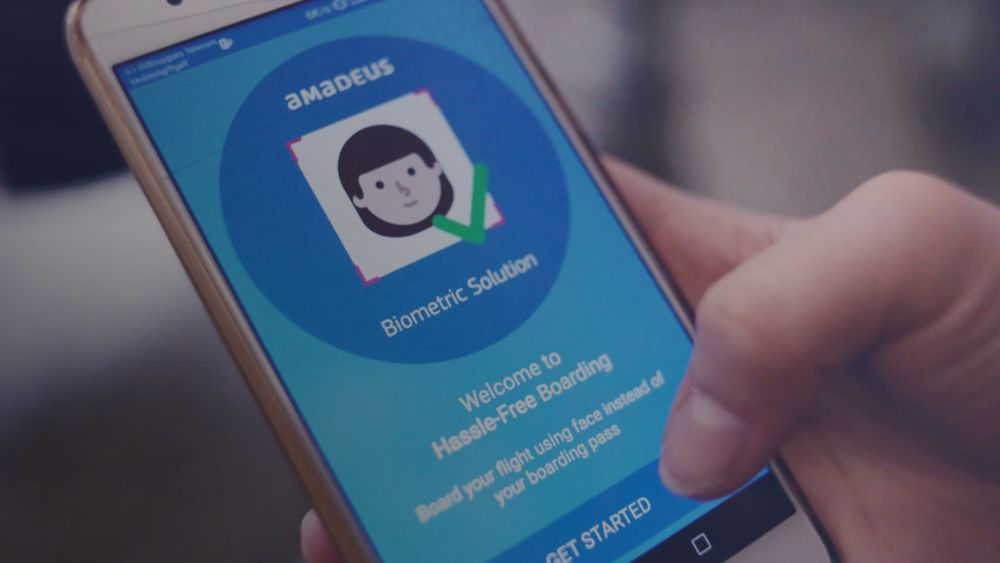Airports around the world have been rapidly deploying biometric solutions over the last few years. This technology may not be entirely new, with passengers having noticed certain aspects at particular parts of their journey, such as security gates. However, its utilization is now truly being optimized in the modern era.
A new era
Amid a plethora of new requirements that air travel stakeholders have to consider, airlines have been keen on rolling out biometrics across the board. Airport processing is costly and time-consuming. However, biometrics can help cut costs and time considerably. For example, we previously reported that an entire Lufthansa A380 was boarded in 20 minutes, thanks to biometric scanning. This is just one of many instances of this technology bringing greater efficiency.
Recently, Simple Flying caught up with Stephan Hirmer, Head of Passenger Processing Services & Digital Airport at Amadeus, to talk about the benefits of biometrics. Amadeus is global travel IT powerhouse, behind several revolutions of modern airport and airline systems.
Hirmer highlighted the seamless integration of biometrics. After the initial implementation, the system can be maintained easily.
“A key aspect for us in terms of biometrics is that it's a cloud-hosted system for us. So, we have very little manual integration. Essentially, we ship and install the hardware cameras. So, in terms of getting up to speed, it's very quick for us. We can do the implementations very smoothly and very quickly. Since our system is hosted in the cloud, we can benefit from existing integrations with the airline systems,” Hirmer told Simple Flying.
“It's important that our biometric system integrates tightly with the airline systems. We do this centrally. From our data centers, we integrate a given departure control system or another airline system, and then this airline can use our biometrics at any airport where we have our biometrics deployed. So, this integration with the airline side is very important. The traditional system is quite time-consuming and relatively expensive. By bringing the whole system into the cloud, we are able to streamline that process to do it only once, and then have everyone benefit from that one-time integration.”
High-quality solutions
Hirmer adds that Amadeus’ image capture technology is top of the range. It has been developed in-house, and it makes for rapid recognition of the passenger. The passenger briefly stands in front of the camera, and if they have a mask, the system will recognize this and display a message for the passenger to remove the covering. The camera will then capture the image, identify the passenger, and the traveler is good to go.
Overall, biometrics is replacing manual checks, which are usually performed by agents. Being human beings, if an agent may get tired after some time verifying documents, leading to the risk of error. Hirmer explains that a biometric camera will perform at the same high level of accuracy and quality, hours and hours on end. So, the quality of the checks is higher, leading to the opportunity to reduce costs.
Airlines had previously been primarily concentrating on the security, cost, and speed advantages of biometrics. However, the global health crisis brought new needs to be addressed, catalyzing the adoption of the technology.
Biometrics is a valuable asset in the context of the pandemic. Biometric, by definition, is touchless. Passengers don’t have to hand over their boarding pass or passport to another individual. So, human contact is reduced alongside passenger touchpoints, cutting down the risk of spreading the virus. Altogether, biometrics can be used at a wide variety of points of the passenger journey.
In effect
Amadeus has already displayed this factor in the real world. For instance, at Tokyo Narita, the company collaborated with NEC to introduce Japan’s first end-to-end biometric boarding process earlier this year.
From check-in and bag drop to security and boarding, passengers didn't have to go through any manual processes thanks to the help of IATA One ID. This technology allows travelers to further streamline their journey with a document-free process based on identity.
At Narita International, Amadeus’ ICM Airport Technics supplied the kiosks and ABD units fitted with biometric cameras and application software. These work alongside NEC’s facial recognition system.
Get your boarding pass to the flight of the year. The Future Flying Forum is taking off soon!
Combining well
Biometrics are continuing to be prevalent across the continents. A recent launch was at Fort Lauderdale Hollywood International Airport, which partnered with Amadeus to facilitate biometric boarding for all international departures.
Complying with US Customs & Border Protection Agency requirements for all international travelers to biometrically validate they have departed the country, the system not only biometrically verifies the traveler with border security, but it also matches them with their booking and automatically boards them in the system, bringing a fully contactless and smooth procedure.
Ultimately, this process in Fort Lauderdale is an example of how biometrics tackles security, efficiency, safety, and cost concerns for airlines. There have been airport overhauls with these systems over the last year, and this will undoubtedly continue throughout this decade.
What are your thoughts about biometrics at the airport? What do you make of its implementation over the last few years? Let us know what you think of the technology’s prospect in the comment section.


![Amadeus Star Alliance Traveler ID Partnership Visual[43]](https://static1.simpleflyingimages.com/wordpress/wp-content/uploads/2021/10/Amadeus-Star-Alliance-Traveler-ID-Partnership-Visual43-1000x557.jpg)
